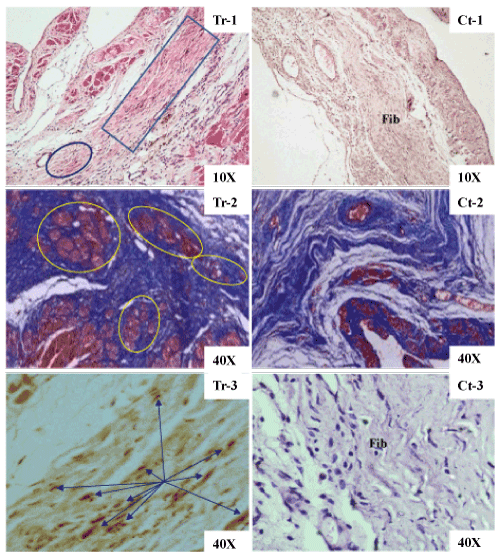
 |
| Figure 4: Morphological assessment of the therapeutic effect of aFRLM on MI. Representative micrographs of aFRLM-treated (4 weeks) MI heart (Tr-1) showed that many red-stained myocyte-like cell clusters (blue rectangular surrounded) in the central area of the infarct were found that replaced the infarcted cardiac tissues. By comparison, the large area of fibrous scar was found throughout the whole infarct region (Fib) in vehicle-treated MI heart (Ct-1) with few myocyte-like cell clusters found. Masson’s trichrome staining demonstrated that although the infarcted cardiac tissues were replaced blue-stained fibrous scar tissues, many red-stained myocyte-like cell clusters were found in the central infarct region (tr-2). However, in the vehicle-treated MI heart (Ct-2), the blue-stained fibrous scar replacement of the infarcted cardiac tissues was found throughout the whole infarcted region with few red-stained myocyte-like cells clusters observed. Some of the myocyte-like cells in the central infarct (blue arrows) were positively stained by both Ki-67 (brown nuclei) and MHC (yellow cytoplasm) specific antibodies in aFRLM-treated MI hearts (Tr-3). Some of the regenerating myocytes joined together in tandem forming myocardium-like tissue. By contrast, fibrous scar replacement was found throughout the infarct region (Fib) with few both Ki-67 and MHC positively stained myocyte-like cells found (Ct-3). |